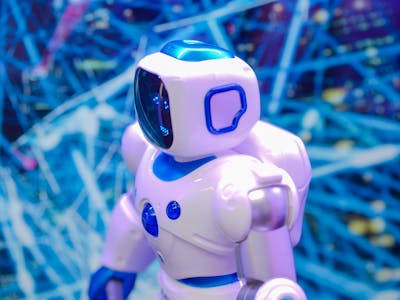
Meet Sara, Saudi Arabia’s first humanoid robot! This innovative creation by QSS AI & Robots blends cutting-edge technology with the country’s unique social fabric.
Designed to be a Culturally-Sensitive Companion:
- Sara’s developers programmed her to be respectful and avoid controversial topics like politics and sex, reflecting Saudi Arabia’s social norms.
- She even has a digital age and wears an abaya, a traditional Saudi robe, showcasing cultural sensitivity in her design.
- You can hear Sara interact with popular YouTuber Dhruv Rathee in this video [link the video here].
Tech Power with Local Nuances:
- Unlike robots relying on external programs, Sara utilizes a proprietary language learning model (LLM) developed by QSS AI & Robots.
- This LLM allows her to understand and respond to both Arabic and English, highlighting Saudi Arabia’s push for technological advancements.
- However, it’s important to remember that AI operates within the social context it’s designed for, and Sara’s capabilities acknowledge these norms.
A Nation in Transition:
- Saudi Arabia’s legal system is based on Sharia law, but recent years have seen social reforms like relaxed dress codes and allowing women to drive.
- Public discourse on sensitive topics like sex and political activism remains restricted, reflecting ongoing societal changes.
Viral Controversy and Cultural Perception:
- While Sara marks a step forward in Saudi AI, another QSS AI robot, Muhammad, sparked controversy earlier.
- A video showed Muhammad seemingly touching a female reporter inappropriately, leading to online accusations of misconduct.
- The company CEO, Elie Metri, dismissed it as a cultural misunderstanding, explaining that robots naturally use gestures while communicating.
- He believes the incident highlights cultural differences, as such gestures are not considered offensive in Saudi Arabia.
Sara’s creation is a fascinating glimpse into a nation embracing technological progress while remaining mindful of its traditions. As AI continues to evolve, navigating the interplay between technology and social norms will be an ongoing challenge.


